Articles > Geography
Know Switzerland Largest Cities? Here are the top 25 to get you started.
1. Zurich (Population: 436,370)
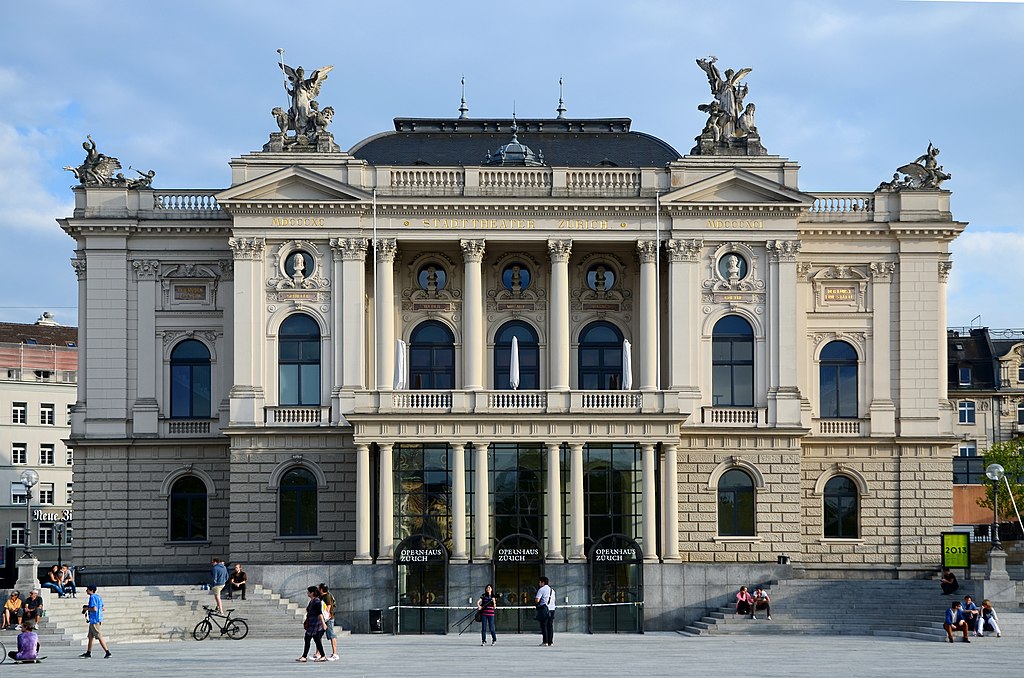
Zurich, the largest city in Switzerland, is a global financial hub and cultural powerhouse. Situated on the shores of Lake Zurich and surrounded by the Swiss Alps, the city blends natural beauty with urban sophistication. Its famous Bahnhofstrasse is one of the world’s most exclusive shopping avenues, while institutions such as ETH Zurich and the Swiss National Museum emphasize its intellectual and cultural importance. Zurich also boasts a vibrant arts scene, with dozens of museums, theaters, and the renowned Zurich Opera House. The Old Town, with medieval alleys and historic churches such as Grossmünster, reveals the city’s long history. Despite its business-oriented image, Zurich is known for its quality of life, consistently ranked among the best globally. From innovative gastronomy to lakeside swimming in summer, the city offers a unique balance of commerce and leisure.
Interesting Fact:
Zurich is home to over 50 museums and 100 art galleries, making it one of Europe’s cultural capitals.
2. Geneva (Population: 208,991)
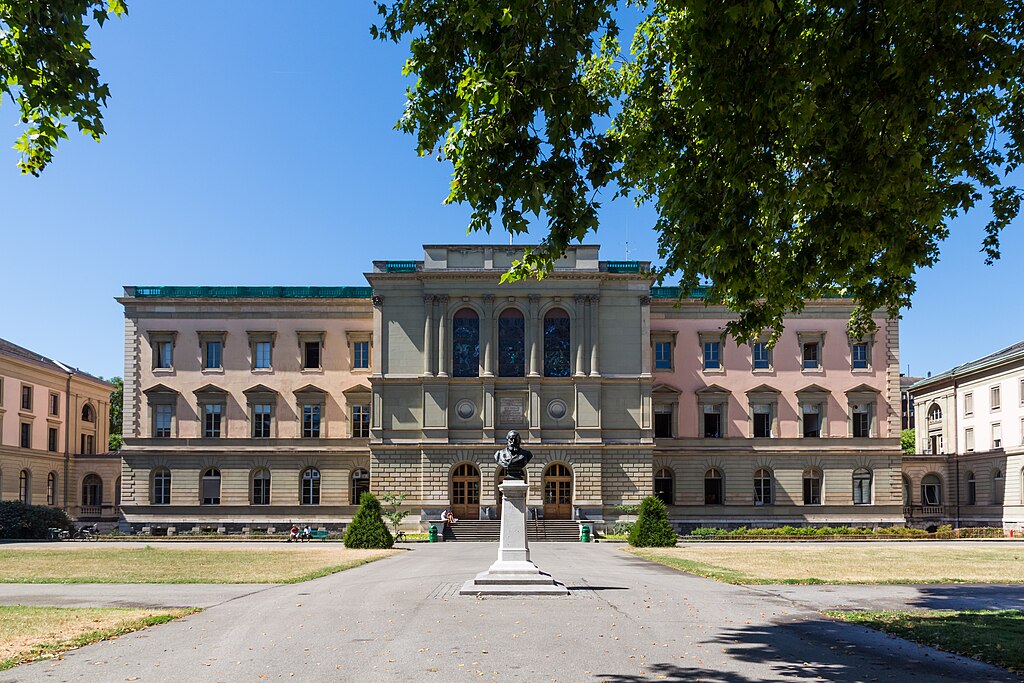
Geneva, nestled on the banks of Lake Geneva, is famous as a global center for diplomacy and international cooperation. The United Nations and the Red Cross have major headquarters here, making Geneva synonymous with humanitarian and peacekeeping efforts. The city is French-speaking and culturally cosmopolitan, attracting residents and visitors from around the globe. Its iconic Jet d’Eau fountain is one of Europe’s tallest, while the Old Town preserves medieval charm with winding streets and historic cathedrals. Geneva is also renowned for watchmaking, luxury shopping, and its thriving banking industry. Beyond business, the city is framed by stunning Alpine scenery and is a gateway to nearby ski resorts. With its blend of international politics, cultural sophistication, and natural beauty, Geneva holds a unique place on the world stage.
Interesting Fact:
The Geneva Conventions, which set international standards for humanitarian treatment in war, were signed here.
3. Basel (Population: 177,522)
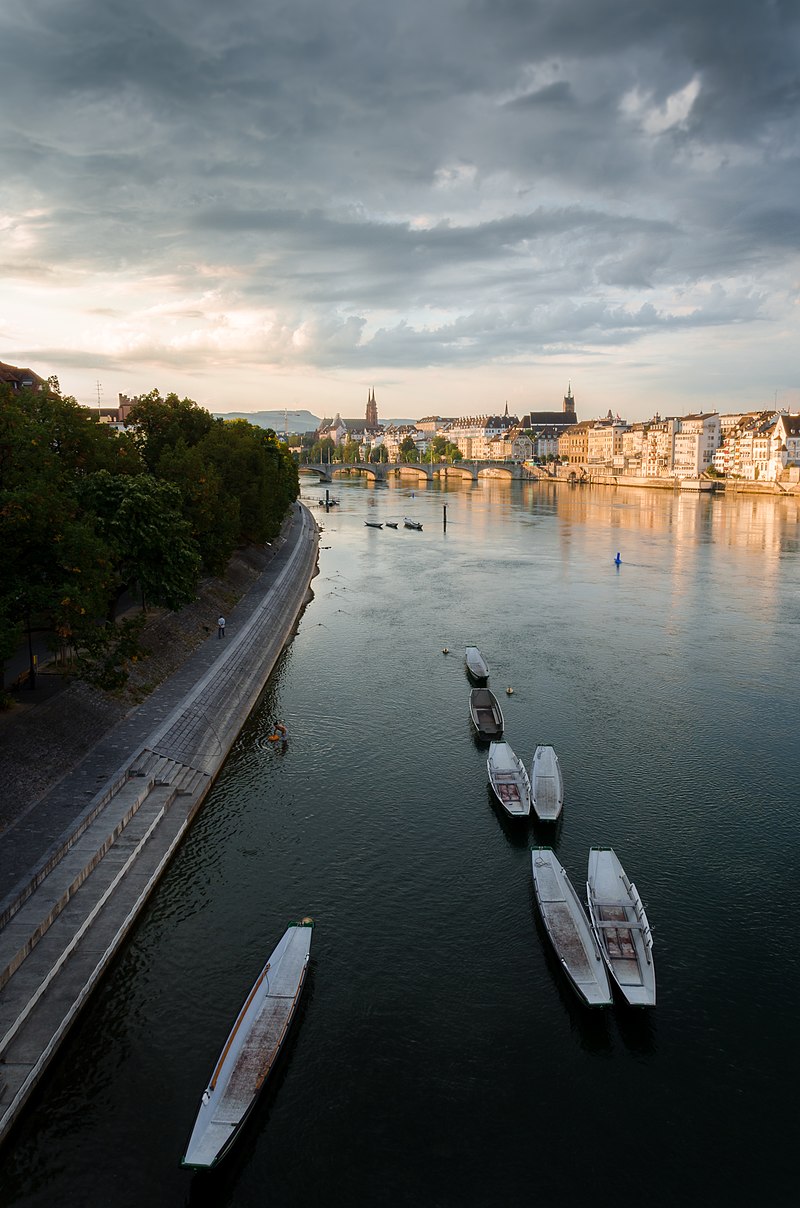
Basel, located on the Rhine River at the crossroads of Switzerland, Germany, and France, is a thriving center of culture, science, and commerce. Known as Switzerland’s cultural capital, Basel is home to Art Basel, one of the world’s leading contemporary art fairs. The city also features an impressive collection of museums, including the Kunstmuseum and Fondation Beyeler. Basel’s historic Old Town is characterized by medieval buildings and the red sandstone Basel Minster. As an economic hub, Basel hosts major pharmaceutical and chemical companies, making it a driver of Swiss innovation. Its university, the oldest in Switzerland, emphasizes its intellectual legacy. Combining cultural prestige with economic power, Basel is a vital Swiss city with global influence.
Interesting Fact:
Basel has more museums per capita than almost any other city in the world.
4. Lausanne (Population: 144,809)

Lausanne, on the northern shores of Lake Geneva, is known as the Olympic Capital since it houses the headquarters of the International Olympic Committee. The city is French-speaking and has a youthful, dynamic atmosphere, thanks in part to its universities, including the prestigious École Polytechnique Fédérale de Lausanne (EPFL). The medieval Old Town, dominated by the Gothic Lausanne Cathedral, blends history with modern vibrancy. Lausanne is also a cultural hub, offering renowned museums such as the Olympic Museum and a vibrant music scene. Its lakeside setting provides a stunning backdrop for outdoor recreation, including boating, hiking, and vineyard tours in the nearby Lavaux region, a UNESCO World Heritage site. With its mix of sport, culture, and education, Lausanne offers a unique identity within Switzerland.
Interesting Fact:
The Olympic Museum in Lausanne is the largest museum in the world devoted to the Olympic Games.
5. Bern (Population: 137,963)

Bern, the capital city of Switzerland, is famous for its beautifully preserved medieval Old Town, which is a UNESCO World Heritage site. Built around the meandering Aare River, Bern boasts cobblestone streets, arcaded walkways, and iconic landmarks such as the Zytglogge clock tower and the Federal Palace, home of Switzerland’s government. The city is known for its relaxed charm, combining political significance with cultural richness. Bern was also the home of Albert Einstein, who developed parts of his theory of relativity while living here. Today, Bern hosts numerous museums, theaters, and festivals, reflecting its vibrant cultural scene. The city also offers natural beauty, with river swimming and Alpine views nearby.
Interesting Fact:
Bern’s symbol is the bear, and real bears live in the city’s famous Bear Park.
6. Winterthur (Population: 120,344)
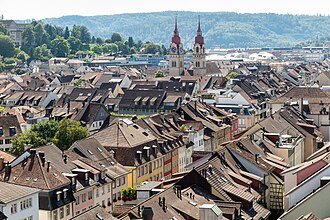
Winterthur, located in the canton of Zurich, is Switzerland’s sixth-largest city and a hub of culture and innovation. Known historically as an industrial powerhouse, Winterthur today balances its manufacturing heritage with a vibrant cultural scene. The city is home to the Oskar Reinhart Collection, one of Switzerland’s most prestigious art collections, and features a lively old town filled with cafes, shops, and weekly markets. Winterthur also has a strong reputation for education, with the Zurich University of Applied Sciences (ZHAW) playing a key role in research and technology. Its many gardens and green spaces, including the well-known Rosengarten, make Winterthur particularly appealing to families and visitors. The city’s location near Zurich offers both convenience and a quieter lifestyle, blending the best of urban and suburban living.
Interesting Fact:
Winterthur hosts Switzerland’s largest annual short film festival, the International Short Film Festival.
7. Luzern (Population: 86,217)
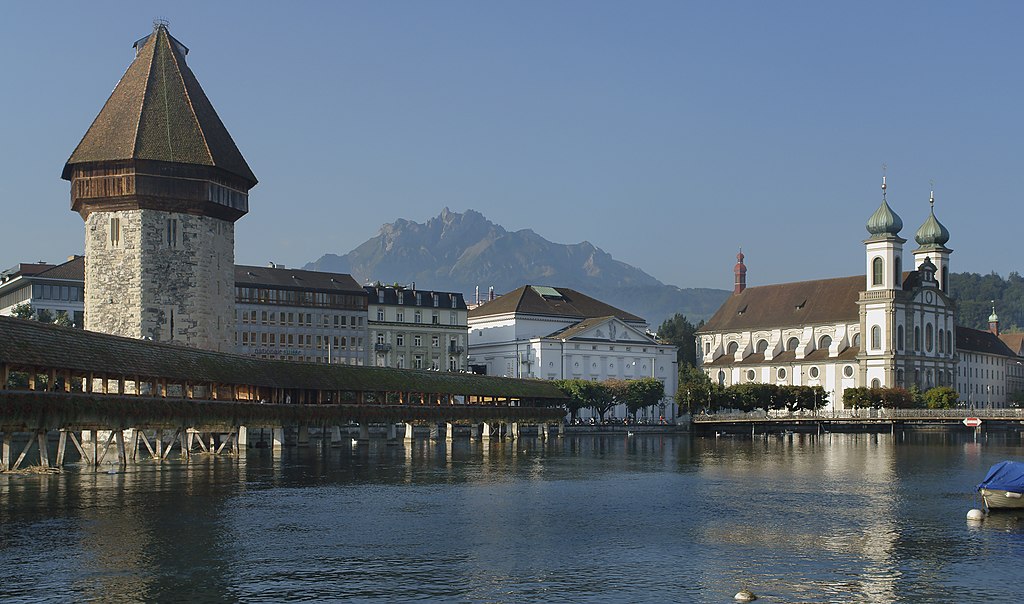
Luzern, or Lucerne in English, is one of Switzerland’s most picturesque cities, nestled beside Lake Lucerne and surrounded by towering mountains. Famous for its medieval Old Town, the city boasts iconic landmarks such as the Chapel Bridge (Kapellbrücke) and Water Tower, as well as the impressive Lion Monument. Luzern is a cultural center, with music festivals such as the Lucerne Festival drawing world-class performers. The city is also a gateway to the Swiss Alps, with easy access to Mount Pilatus and Rigi. Tourism plays a central role in the local economy, with visitors flocking year-round to enjoy the city’s blend of history, scenic beauty, and modern amenities. Its compact size makes it a walkable and welcoming destination that captures the essence of Switzerland’s charm.
Interesting Fact:
The Chapel Bridge in Lucerne, built in 1333, is the oldest covered wooden bridge in Europe.
8. St Gallen (Population: 78,839)
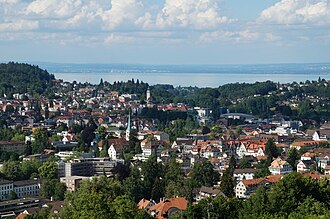
St. Gallen, located in eastern Switzerland, is renowned for its historic Abbey of St. Gall, a UNESCO World Heritage Site. The abbey’s library is one of the richest medieval libraries in the world, containing priceless manuscripts and rare works. St. Gallen’s textile industry, particularly embroidery, once made the city famous across Europe, and this heritage remains visible in its museums and cultural institutions. The city blends historic charm with a lively university atmosphere, thanks to the University of St. Gallen, one of Europe’s leading business schools. Narrow streets, colorful facades, and bay windows characterize the Old Town, while the surrounding hills and proximity to Lake Constance provide stunning natural backdrops. Today, St. Gallen combines its academic reputation, history, and culture into a vibrant urban center.
Interesting Fact:
The Abbey Library of St. Gall holds around 170,000 works, including texts over 1,000 years old.
9. Lugano (Population: 63,621)
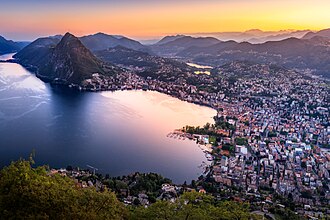
Lugano, located in the Italian-speaking canton of Ticino, combines Swiss precision with Mediterranean flair. Overlooking Lake Lugano and surrounded by mountains, the city is a popular tourist destination known for its mild climate, palm-lined promenades, and elegant piazzas. Lugano serves as a financial center, with banking and business services playing a major role in its economy. The city also emphasizes arts and culture, hosting events such as the Lugano Festival and housing the impressive LAC Lugano Arte e Cultura center. Its proximity to Italy influences the local cuisine, architecture, and lifestyle, creating a distinct cultural blend. Outdoor activities, from boating and hiking to mountain excursions, make Lugano a versatile destination that appeals to both business travelers and tourists alike.
Interesting Fact:
Lugano is often called the “Monte Carlo of Switzerland” due to its luxury lifestyle and lakeside glamour.
10. Biel (Population: 56,836)

Biel, also known as Bienne, is Switzerland’s largest bilingual city, where both French and German are official languages. Located near Lake Biel, the city is renowned as the center of Swiss watchmaking, hosting major brands such as Rolex, Omega, and Swatch. This heritage is celebrated in museums and local craftsmanship that continue to thrive today. Beyond its industrial fame, Biel offers cultural attractions, including theaters, galleries, and music festivals. The city’s Old Town provides historic charm with medieval buildings and lively squares, while modern Biel embraces green initiatives and innovation. Surrounded by vineyards and close to the Jura Mountains, the city combines urban convenience with natural beauty. Biel’s unique bilingual identity and economic importance make it a vital part of Switzerland’s landscape.
Interesting Fact:
Biel is the official headquarters of the world-famous watch brand Rolex.
11. Neuchatel (Population: 45,304)
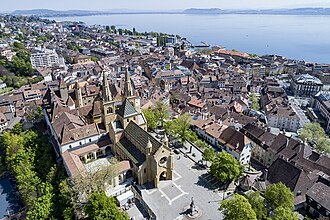
Neuchatel, located on Lake Neuchatel in western Switzerland, is known for its beautiful lakeside setting and historic architecture. The city has a strong French influence, reflected in its language and culture. Neuchatel Castle and the Collegiate Church dominate the skyline, offering glimpses into its medieval past. The city is also home to the University of Neuchatel, which contributes to its academic and cultural vibrancy. Neuchatel played a major role in the Swiss watchmaking industry, and its legacy is still visible today. Modern Neuchatel embraces innovation, with research centers and technology firms shaping its economy. The combination of lakeside leisure, historic depth, and cultural life makes Neuchatel a compelling destination.
Interesting Fact:
Neuchatel is famous for its absinthe heritage, with distilleries still active in the region.
12. Bellinzona (Population: 45,299)
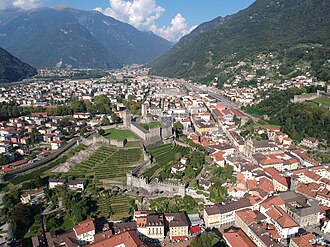
Bellinzona, the capital of Ticino, is famous for its trio of medieval castles—Castelgrande, Montebello, and Sasso Corbaro—all UNESCO World Heritage Sites. These fortresses dominate the skyline and testify to the city’s strategic importance in controlling Alpine passes. Bellinzona is a cultural and political center, with lively markets, Italian-style piazzas, and festivals celebrating local traditions. The city’s location at the crossroads of major trade routes has shaped its history and continues to influence its role as a transportation hub. Italian language and culture are central here, creating a warm and Mediterranean-influenced atmosphere within a Swiss framework. Bellinzona balances history with modern living, making it one of the most distinctive cities in Switzerland.
Interesting Fact:
Bellinzona’s three castles form the most impressive medieval defensive system in Switzerland.
13. Thun (Population: 44,118)

Thun, often called the “Gateway to the Bernese Oberland,” lies at the northern end of Lake Thun and offers stunning views of the Alps. Its historic center features cobblestone streets, the medieval Thun Castle, and riverside promenades along the Aare. Thun is popular with tourists seeking both culture and outdoor adventure, as it provides access to skiing, hiking, and boating in the surrounding mountains and lakes. The city has a lively atmosphere, with markets, cafes, and cultural festivals adding to its charm. Thun is also a military and administrative center, giving it local importance beyond tourism. With its natural beauty and historic appeal, Thun is one of Switzerland’s most picturesque mid-sized cities.
Interesting Fact:
Thun Castle, built in the 12th century, now houses a historical museum with panoramic Alpine views.
14. Koniz (Population: 43,501)
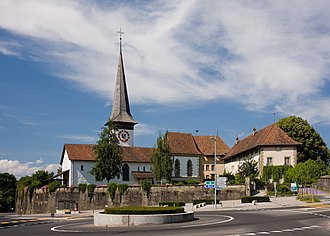
Koniz, located just south of Bern, is one of Switzerland’s largest municipalities by population. Though often considered part of the Bern metropolitan area, Koniz retains its own identity with a mix of rural villages, suburban neighborhoods, and historic landmarks. The town center features Koniz Castle, a cultural venue that hosts concerts, exhibitions, and community events. Koniz is known for its balance of urban development and green spaces, making it attractive for families seeking a quieter lifestyle near the capital. The area also has a strong tradition of local festivals and Swiss heritage, creating a sense of community pride. Its proximity to Bern allows residents to enjoy both metropolitan and suburban advantages.
Interesting Fact:
Koniz Castle dates back to the 13th century and today serves as a cultural center.
15. Chur (Population: 39,174)

Chur, located in the canton of Graubünden, is Switzerland’s oldest city, with evidence of settlement dating back over 5,000 years. The city sits at the gateway to the Alps and serves as a major hub for mountain tourism, with railways leading to famous destinations such as St. Moritz and Davos. Chur’s Old Town is a charming maze of medieval streets, churches, and colorful buildings, offering insight into its long history. The city blends heritage with modernity, hosting art galleries, theaters, and events that reflect both tradition and innovation. Outdoor enthusiasts appreciate its access to hiking, skiing, and alpine adventures. Chur’s unique position as both a historic city and a transport hub gives it an enduring importance in Switzerland.
Interesting Fact:
Chur is considered the oldest continuously inhabited city in Switzerland.
16. Fribourg (Population: 39,144)
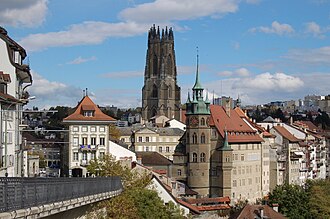
Fribourg, a bilingual city in western Switzerland, is renowned for its medieval Old Town, perched above the Sarine River. Its Gothic cathedral and well-preserved fortifications showcase centuries of history. Fribourg is home to a major university, contributing to its youthful and intellectual atmosphere. The city blends French and German cultures, reflected in its cuisine, traditions, and language. Known for its art and culture, Fribourg hosts numerous festivals, exhibitions, and concerts throughout the year. Its bridges, both ancient and modern, symbolize the city’s role as a connector between regions and cultures. Fribourg remains a vital center of education, history, and cultural exchange within Switzerland.
Interesting Fact:
Fribourg’s Saint Nicholas Cathedral has one of Switzerland’s tallest towers at 74 meters.
17. Schaffhausen (Population: 38,960)
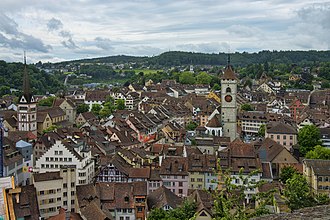
Schaffhausen, in northern Switzerland, is best known for the spectacular Rhine Falls, Europe’s largest waterfall, located nearby. The city itself boasts a historic Old Town filled with Renaissance buildings decorated with ornate frescoes and bay windows. Schaffhausen’s Munot Fortress, a circular 16th-century stronghold, offers panoramic views of the city and surrounding vineyards. Historically, Schaffhausen was a thriving trade center due to its location on the Rhine River, and it continues to embrace its cultural and commercial heritage. The city also supports watchmaking and wine production, industries that remain important today. With natural beauty and cultural depth, Schaffhausen is both a tourist destination and a place of enduring Swiss tradition.
Interesting Fact:
The Rhine Falls near Schaffhausen span 150 meters, making them Europe’s widest waterfall.
18. Vernier (Population: 37,832)
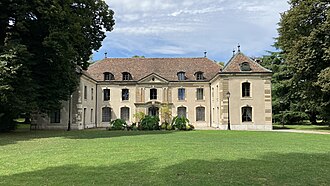
Vernier, located in the canton of Geneva, is a diverse and rapidly growing municipality. Positioned close to Geneva International Airport, Vernier benefits from its strategic location as part of the Geneva metropolitan area. The city is home to a multicultural population, reflecting Geneva’s global character, and offers a variety of cultural, recreational, and community facilities. While largely residential, Vernier has also attracted businesses and industries, contributing to its economic development. Green spaces and public parks enhance the quality of life for residents, providing balance to the urban environment. Vernier illustrates the dynamic growth and diversity that define Switzerland’s metropolitan regions today.
Interesting Fact:
Vernier is the second-largest municipality in the canton of Geneva after the city of Geneva itself.
19. La Chaux-de-Fonds (Population: 37,593)
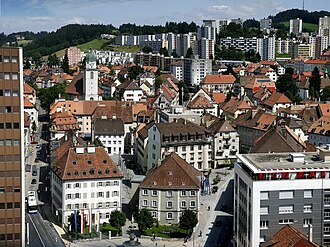
La Chaux-de-Fonds, in the Jura Mountains, is a UNESCO World Heritage city famous for its watchmaking heritage. Its urban design, based on a grid system, was developed in the 19th century to accommodate the needs of watchmakers, and the city became one of the world’s leading centers of horology. La Chaux-de-Fonds also has a strong architectural legacy, being the birthplace of Le Corbusier, one of the most influential modern architects. The city hosts museums, cultural institutions, and festivals celebrating both its industrial past and its artistic future. Its high-altitude location gives it a distinct character, shaped by mountain life and history.
Interesting Fact:
La Chaux-de-Fonds was the birthplace of Le Corbusier, a pioneer of modern architecture.
20. Lancy (Population: 37,258)

Lancy, a suburb of Geneva, is a thriving residential and business community. With a diverse population and close proximity to Geneva’s international institutions, Lancy embodies the cosmopolitan character of the region. The area has invested heavily in infrastructure and public services, making it an attractive location for families and professionals. Parks, cultural centers, and sports facilities contribute to its high quality of life. Lancy also hosts several festivals and local traditions, reflecting a strong sense of community. The balance between urban development and accessible green spaces ensures that Lancy continues to grow as a desirable place to live within the Geneva region.
Interesting Fact:
Lancy is home to Geneva’s Stade de Genève, one of Switzerland’s largest football stadiums.
21. Sion (Population: 37,144)
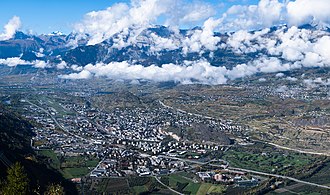
Sion, the capital of the canton of Valais, is one of Switzerland’s oldest cities, with human settlement dating back thousands of years. Its skyline is dominated by two hilltop fortresses: Valère Basilica and Tourbillon Castle, which highlight its medieval heritage. Sion is located in the heart of the Rhône Valley, surrounded by vineyards, and is known for its excellent wines. Today, the city combines its historic past with a vibrant cultural life, including music festivals, art exhibitions, and local markets. Sion is also a center for alpine sports, serving as a gateway to some of Switzerland’s most famous ski resorts. This mix of history, culture, and natural beauty makes Sion a unique Swiss destination.
Interesting Fact:
Valère Basilica in Sion houses one of the world’s oldest playable organs, dating from the 15th century.
22. Uster (Population: 36,555)
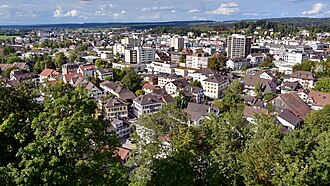
Uster, located in the canton of Zurich, is a fast-growing city that blends urban development with natural landscapes. Situated near Greifensee Lake, Uster offers residents abundant opportunities for recreation, including hiking, biking, and water sports. The city’s history stretches back to medieval times, with Uster Castle serving as a historic landmark. Modern Uster focuses on innovation, sustainability, and community services, making it a popular place for families and professionals. Its proximity to Zurich enhances its appeal, providing easy access to the economic heart of Switzerland while maintaining a more relaxed pace of life. Uster has successfully integrated tradition with modernity, reflecting the evolving character of Swiss urban areas.
Interesting Fact:
Uster was the site of the “Uster Demonstration” in 1830, an important event in Swiss democratic history.
23. Emmen (Population: 32,609)

Emmen, located just outside Lucerne, is a dynamic municipality known for its industrial and economic contributions to central Switzerland. Traditionally a manufacturing hub, Emmen is home to various industries, including aviation, engineering, and food processing. The municipality has undergone significant urban growth in recent decades, attracting a diverse population and expanding its residential neighborhoods. Emmen balances its industrial identity with cultural and recreational offerings, including sports facilities, theaters, and community events. Its proximity to Lucerne provides access to a larger cultural and economic network, while still maintaining a distinct local character. Green spaces and recreational areas around the Reuss River contribute to the quality of life, making Emmen an appealing place for families and workers alike.
Interesting Fact:
Emmen is home to Switzerland’s largest military airbase, the Emmen Air Base, operated by the Swiss Air Force.
24. Dübendorf (Population: 32,547)
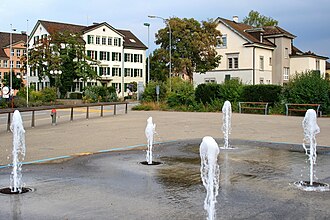
Dübendorf, situated in the canton of Zurich, is a fast-growing municipality with a strong focus on innovation and research. Known for hosting the Swiss Federal Institute of Technology’s (ETH Zurich) research center, Dübendorf plays an important role in shaping Switzerland’s scientific future. The city also has a rich aviation history, with the Dübendorf Airfield serving as one of Switzerland’s earliest and most important air bases. Today, it is being transformed into a hub for technology and sustainable development projects. Residential areas have expanded alongside commercial zones, attracting families and professionals seeking proximity to Zurich. Dübendorf illustrates how a once primarily military town can evolve into a modern, research-driven community that contributes significantly to the nation’s future.
Interesting Fact:
The Dübendorf Airfield hosted Switzerland’s first motor-powered flight in 1910.
25. Zug (Population: 32,126)
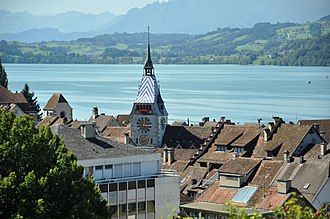
Zug, the capital of the canton of the same name, is internationally recognized as Switzerland’s “crypto valley” due to its leadership in blockchain and fintech innovation. Nestled along Lake Zug with stunning Alpine views, the city offers an exceptional quality of life, blending natural beauty with economic opportunity. Zug is also known for its business-friendly tax policies, which have attracted multinational corporations and startups alike. Despite its modern economic profile, Zug maintains historic charm, with a medieval Old Town and landmarks like the Zytturm clock tower. Cultural institutions, lakeside promenades, and a thriving culinary scene make it both cosmopolitan and welcoming. Zug demonstrates how a small city can have a global economic impact while preserving its Swiss heritage.
Interesting Fact:
Zug was one of the first places in the world where residents could pay taxes using Bitcoin.




